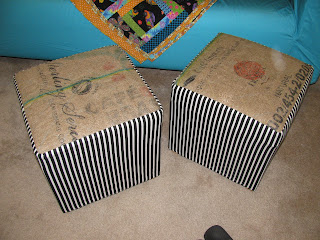This poor chair suffered through life in a hoarder's house, then when I had a contractor in to do some tile work, they set a box of tiles (right?) on this antique chair and blew the springs right out the bottom of the frame. I promise you that I didn't need to learn to tie springs at this point in my life, but thanks to YouTube, I got it done (with the help of my daughter). You really can't do the springs alone. My first couple of tries, they broke free from the cord and whacked me in the hands. Not good.
I tried to get as many angles as I could so I would remember how to reconstruct this. It was no use with the springs because they were hanging from cord out the bottom and had to be cut out and cleaned. I sent the frame out to a local refinisher and got ready for the next step. First time ever stretching webbing onto a chair frame. Little did I know how many times I would use this knowledge.
What you also have to know is that every bit of this chair was covered in a fine dust/mold/decomposing fabric substance. Every thing that was pulled off had to be disposed of immediately. I couldn't cut a pattern from any of the fabrics.
And this is how she looks all cleaned up and webbed. The webbing is applied with a stretcher so that it's extremely tight. It's the foundation for springs, padding and upholstery. If the webbing is loose the upholstery will just stretch and fall apart. And below are the tied springs.
Here there is a bias cut burlap strip that encloses this 5/8" cording. This helps keep the padding within the frame of the chair back. Then everything is covered with burlap. Now it's ready for a layer of coconut fiber, followed by cotton waddding, then covered with muslin or another layer of burlap before the outer fabric is applied. This way you see that each step is smooth before you move on.
And step by step, the cover is added until finally . . .

And here is why I call it my Coffee Chair





























.jpg)
